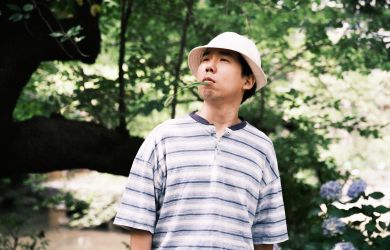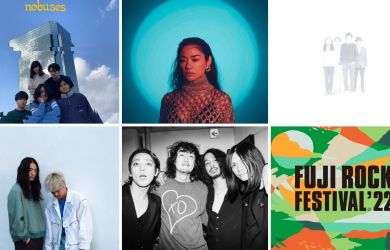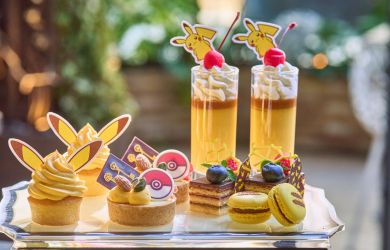
September 30, 2004
Sea world
A grueling 25-hour boat ride ends in the idyllic island chain of Ogasawara
By Metropolis
Originally published on metropolis.co.jp on September 2004

Photos by Cristy Burne
Some groan, others read. Some drink chuhai and cook to a crisp on the top deck of the Ogasawara Maru. It’s no luxury cruise, but it’s the only way to paradise.
Ogasawara is a sub-tropical chain of more than 200 islands, officially part of Tokyo, although scattered a thousand kilometers south of anything remotely resembling stress. For 24 million years, this dramatic isolation has birthed a treasure trove of the weird and wonderful, earning the islands a reputation as the Galapagos of the East.
Two of the largest islands-Chichi-jima at a “whopping” 24 square kilometers, and Haha-jima, even smaller at 21-host Ogasawara’s 2,400 human inhabitants. The other islands are home to a wild mix of birds, bats, bugs, glow-in-the-dark mushrooms and more than 120 endemic plant species. And then there’s the incredibly blue ocean with an official 99.9 percent chance of sighting dolphins on any day of the year, as well as acres upon acres of marine conservatory. Things this good are worth the wait-even 25 hours on the Ogasawara Maru.
It’s a fact that Japan and the Ogasawarans know well-after occupying the islands for 23 years following WWII, the US finally left in 1968 after 86 official requests for their return. Today, the waters surrounding Chichi-jima are home to gray nurse sharks, mammoth lobsters, rays, and a rainbow of fin-chasing batfish and intricately patterned butterfly fish. We’ve anchored the 17-meter Island Queen at the foot of some jagged cliffs, in a tiny bay filled with parrotfish and baby rays. Some divers are floating around with snorkels; others are hard at work on the sundeck. Two or three dolphins swim past the bay’s entrance.

Setoji, the island’s arm-wrestling champ and Ogasawara’s answer to Croc Dundee, has slipped off to hunt octopus on the rocks. He scoops them from their holes, flips their frantic bodies inside out, and then scrapes their innards to the fish. “Hook them on your fingers,” he says. “They’re easier to carry.” He grins and passes us balls of waving tentacles. “Tomorrow we eat octopus rice!”
Maybe all the sea air works up an ocean of appetite, or maybe it’s the ultra-fresh fish, tropical fruit and cold beer. To quench it, Chichi-jima offers a wide choice of chic sushi bars, American-style diners, veranda Italian or island-only izakaya cuisine. The fare is deluxe, the vibe is laid-back, and when things get late it’s just a quick stagger to Chari Tei, the friendly izakaya to which all cobblestones lead.
In recent years, the islands have embraced eco-tourism, and although Ogasawara is still the only place in the world where “sea turtle” appears on legitimate menus, the islanders are conscious that their livelihood depends on the health of their islands. Whaling was a booming industry on Ogasawara until 1987, when the tide turned from blubber to binocular, and whaling boats gave way to whale-watching tours.
Shobu Yamada, an Ogasawaran for more than 20 years, first came to the islands as a fisherman. Now he’s the owner-operator of the Kaizin Diving Service, teaching tourists about the fish he used to hook, and the islands he calls home. “These islands are beautiful but fragile,” he explains. “There was talk a while back of building an airport, bringing in more visitors, and sure, that would be great for business, but there’s a limit to how many people these islands can support.” The airport idea was quashed, and Yamada says this is a good thing. “We want to keep Ogasawara a wild and special place.”
Around July and August every year, hundreds of sea turtles return to the beaches of Ogasawara to lay their eggs. Each turtle weighs up to 180 kilograms, and can punch out about a hundred eggs in three hours. Their favorite haunt is the hidden shell-white beach of Minami-jima, the southernmost island. A few months later, hundreds of tiny turtles will hatch and start towards the water.
When the time comes for us to start towards Tokyo, half the island turns up to send us off. The same thing happens every week, for every boat. The usually deserted pier swells with a mass of tanned bodies, taiko drumming and frenzied waving.
The ferry pulls away from the pier, and we’re all still waving. The lucky ones wave from the dive boats that escort the ferry in a farewell salute. As we chug out to sea, the boats cut their engines and the gamer passengers dive en masse into the water. It’s all I can do not to join them. Twenty-five hours to Tokyo.
The Ogasawara Maru makes its journey about once a week. Floor space is ¥25,100 one way, and a berth in a cabin around ¥50,000. For timetables and more information in English, check out www.bonin-islands.com. Ogasawara is not a cheap place to play-a cold beer costs around ¥800, and a day of boat diving with gear rental will set you back about ¥20,000, while half a day of sea kayak hire is about ¥5,000. The energetic can rent bicycles for ¥1,200 a day, and daily motorcycle rental rates begin at ¥2,000. Accommodation averages around ¥5,000 a night.
[geo_mashup_map]







